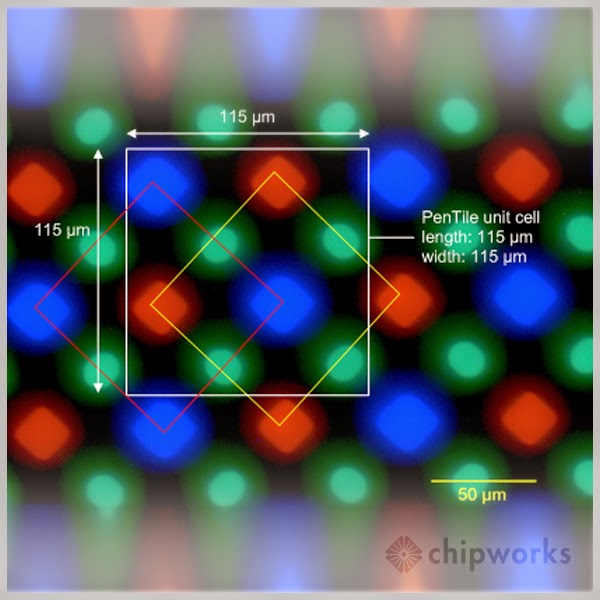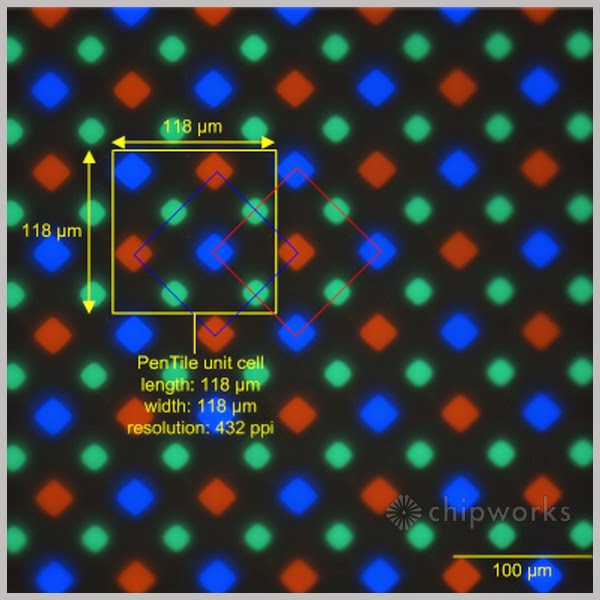 Both the Galaxy S4 and the Galaxy S5 use a Super AMOLED display, but it looks like Samsung’s display division utilized a different form of sub-pixel structure on the Galaxy S5. In the Galaxy S4, the red and blue sub-pixels are rectangular, while the green sub-pixel is slightly oval. However, in the Galaxy S5, all the sub-pixels are rectangular. The size of the sub-pixels has also been reduced from 36 microns for the red sub-pixel to 27 microns. The blue sub-pixel on the Galaxy S5 is now 27 microns, from 31 microns on the Galaxy S4, while green is also slightly
Both the Galaxy S4 and the Galaxy S5 use a Super AMOLED display, but it looks like Samsung’s display division utilized a different form of sub-pixel structure on the Galaxy S5. In the Galaxy S4, the red and blue sub-pixels are rectangular, while the green sub-pixel is slightly oval. However, in the Galaxy S5, all the sub-pixels are rectangular. The size of the sub-pixels has also been reduced from 36 microns for the red sub-pixel to 27 microns. The blue sub-pixel on the Galaxy S5 is now 27 microns, from 31 microns on the Galaxy S4, while green is also slightly reduced from 23 microns to 19 microns.
The new pixel structure as well as the usage of organic materials have allowed Samsung to enhance efficiency by 27 percent on the Galaxy S5 from the Galaxy S4. The screen on the Galaxy S5 is also one of the brightest on a mobile, and is far brighter to any LCD screen available today. The Galaxy S5 can achieve a brightness of 698 nits in outdoor conditions, which allows the screen to be readable even in direct sunlight. Take a look at the how the pixel structure varies between the Galaxy S4 and the Galaxy S5 from the images below:
Samsung galaxy s4
Samsung galaxy s5:-














